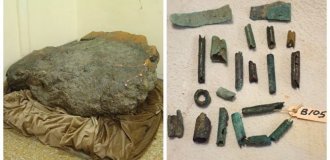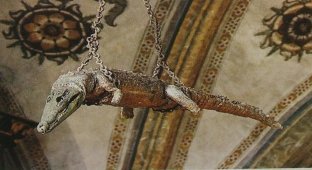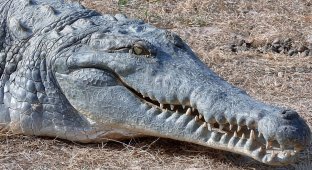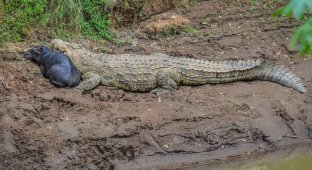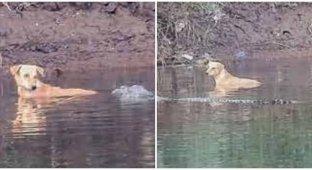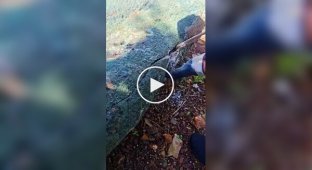Deinosuchus: The Dinosaur Eater. The most terrifying crocodile in the history of Earth (12 photos)
The maximum recorded size of a modern crocodile is 6.12 meters and 1,075 kilograms. This absolute record belongs to a saltwater croc named Lolong. 
The monster was suspected of cannibalism, and judging by its size, for good reason: it would have been a match for a human. Lolong struck primal terror into everyone who saw it. But did you know that crocodiles twice its size once existed? Giant deinosuchians kept even dinosaurs in fear for millions of years! 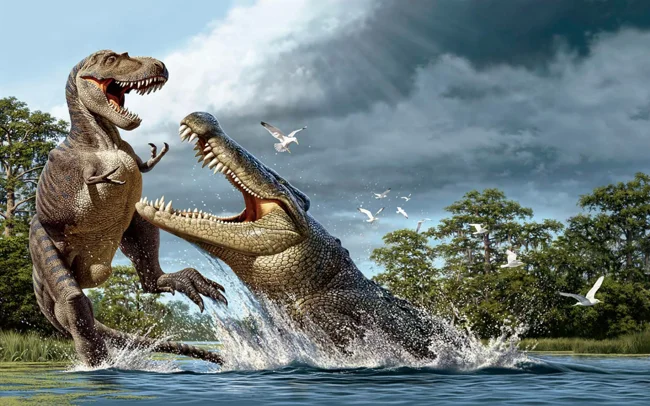
Deinosuchus, or literally "terrible crocodile," is not a single animal, but the name of an entire genus of extinct reptiles. It includes three currently known species. Scientists distinguish them by the preserved bone fragments and their habitats. We won't go into such details—all three species are incredibly toothy and deadly, after all. 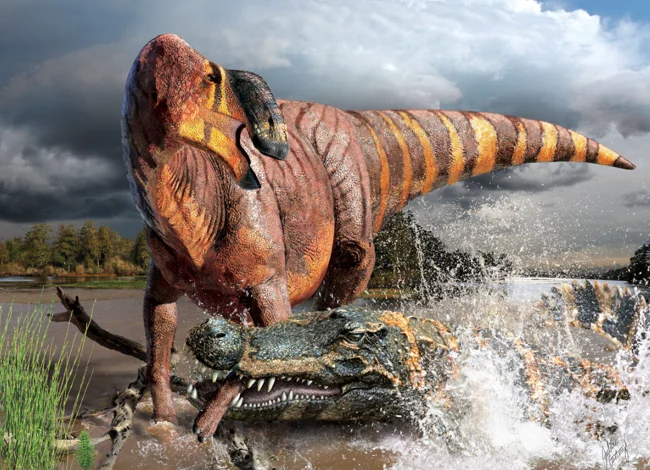
Furthermore, modern reconstructions show that they were all identically similar to living alligators. The fossils had a broad snout, bony scutes on their backs, and a ferocious disposition. Due to their striking similarity, Deinosuchus was even considered the alligator's "daddy." But research from 2025 shows that these ancient reptiles stand at the very beginning of their evolutionary lineage. In other words, Deinosuchus isn't the "daddy," but a distant cousin. 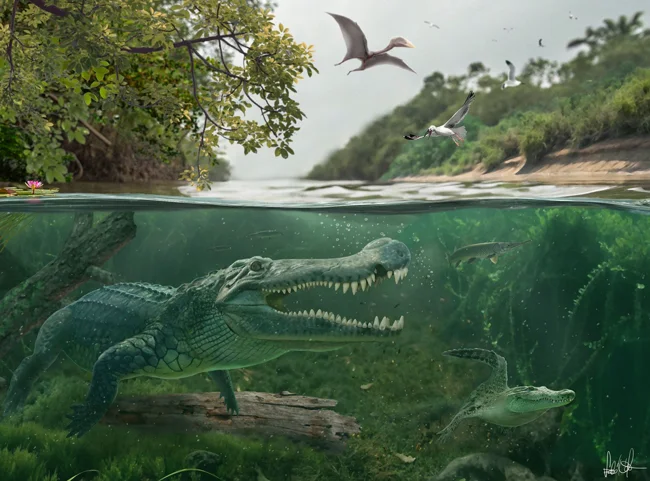
Deinosuchus grew to truly impressive sizes. According to the most ambitious estimates, they reached 12 meters in length and weighed around 8 tons. Literally the size of a bus! However, some researchers doubt the reliability of these reconstructions and cite more mundane figures—up to 10 meters and 2 tons. Calculating precise dimensions is quite difficult, but even so, Deinosuchus remains one of the largest crocodilians of all time! 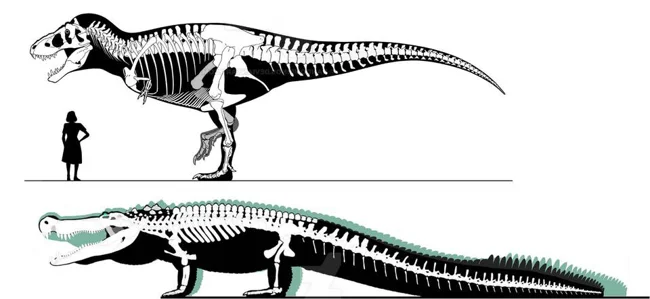

What we know for sure is that Deinosuchus had a very painful bite. This giant lizard clamped its jaws shut with a force of 102,803 Newtons (N). This makes it one of the most powerful predators of all time! For comparison, the bite force of the famous Tyrannosaurus rex is about 64,000 N. And it's pointless to even compare modern crocodiles, sharks, and lions. Deinosuchus's titanic bite force was essential. It hunted dinosaurs, not just anyone! 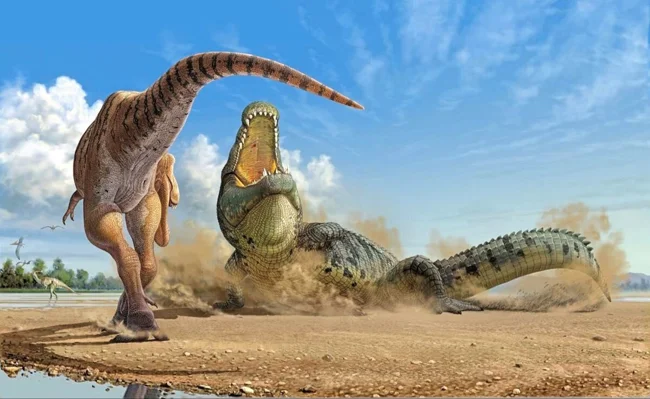
Scientists say the crocodile's diet depended on its habitat. In eastern North America, where the waters were rich in fish, turtles, and other aquatic life, Deinosuchus occupied the niche of modern alligators—it ate anything it could get its mouth on. But in southern North America, the climate dictated harsh conditions. And Deinosuchus didn't stand on ceremony either. Here, the ancient crocodile's prey included large dinosaurs up to 6 meters long! 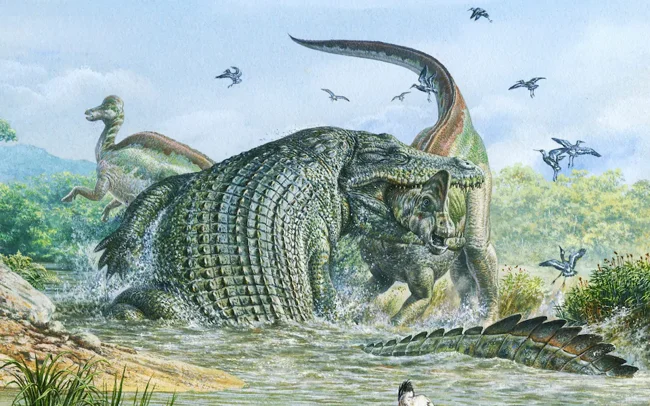
The tactics of ancient lizards were similar to those of modern crocodiles: you sit, watch, and wait for your prey to come to the watering hole and let its guard down. A moment later, the trap-like jaws close. There's no chance of escape. Another moment, and you sink helplessly under the water. 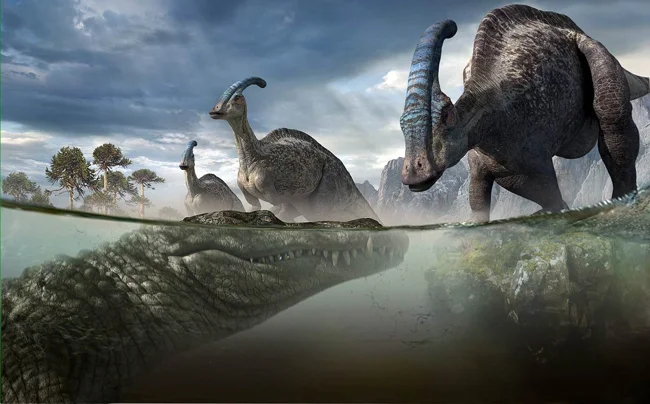
So what do we get? One, a huge, vicious lizard with tons of teeth, remarkable strength, and a bad temper. Two, it's a member of a particularly resilient order of crocodiles, which survived several mass extinctions, witnessed the decline of the dinosaurs, and continues to harass mammals to this day. Three, scientists say Deinosuchus isn't much different from modern alligators and crocodiles, except that it's significantly larger.
So it turns out that Deinosuchus is the perfect monster for all time, a reptile with straight-A syndrome, winning by all measures. It would seem that such successful and powerful beasts certainly shouldn't have gone extinct. However, 73 million years ago, they vanished from the face of the planet, not living to see that asteroid strike. But why? 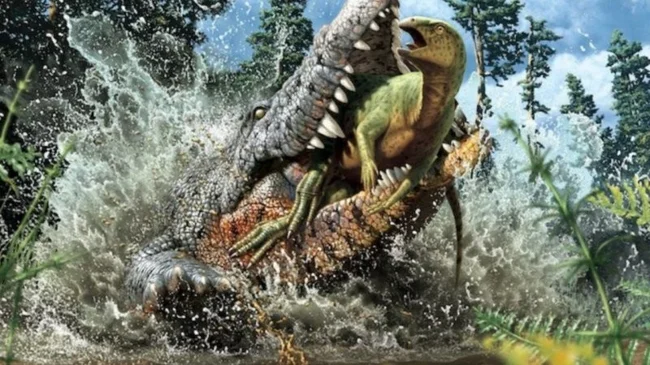
To understand the extinction, we need to delve a little into the geography of the time. At the time of the existence of Deinosuchus, North America as we know it didn't exist. The continent was divided by the Western Interior Seaway. This sea was quite shallow, with many bays, estuaries, rivers, and swamps. The climate was warmer and wetter than it is today. A crocodile's paradise! 
The latest research completes the picture. It turns out that Deinosuchus tolerated salt water just like a modern saltwater crocodile. This means that this beast lived not only in river mouths but also in open waters. A big crocodile can swim big! 
Everything changed when North America decided to unite. The Western Sea began to dry up, and from the once vast body of water, only a couple of lakes, small rivers, and swamps remained across the continent. It was at this point that the ancestors of modern caimans and alligators entered the evolutionary arena. But there was simply no room left for Deinosuchus! How do you feed a carcass weighing several tons in a squalid swamp or a sluggish river?
So it all came together: the sea disappeared, access to large prey disappeared, and with it, the Deinosuchus went extinct.





